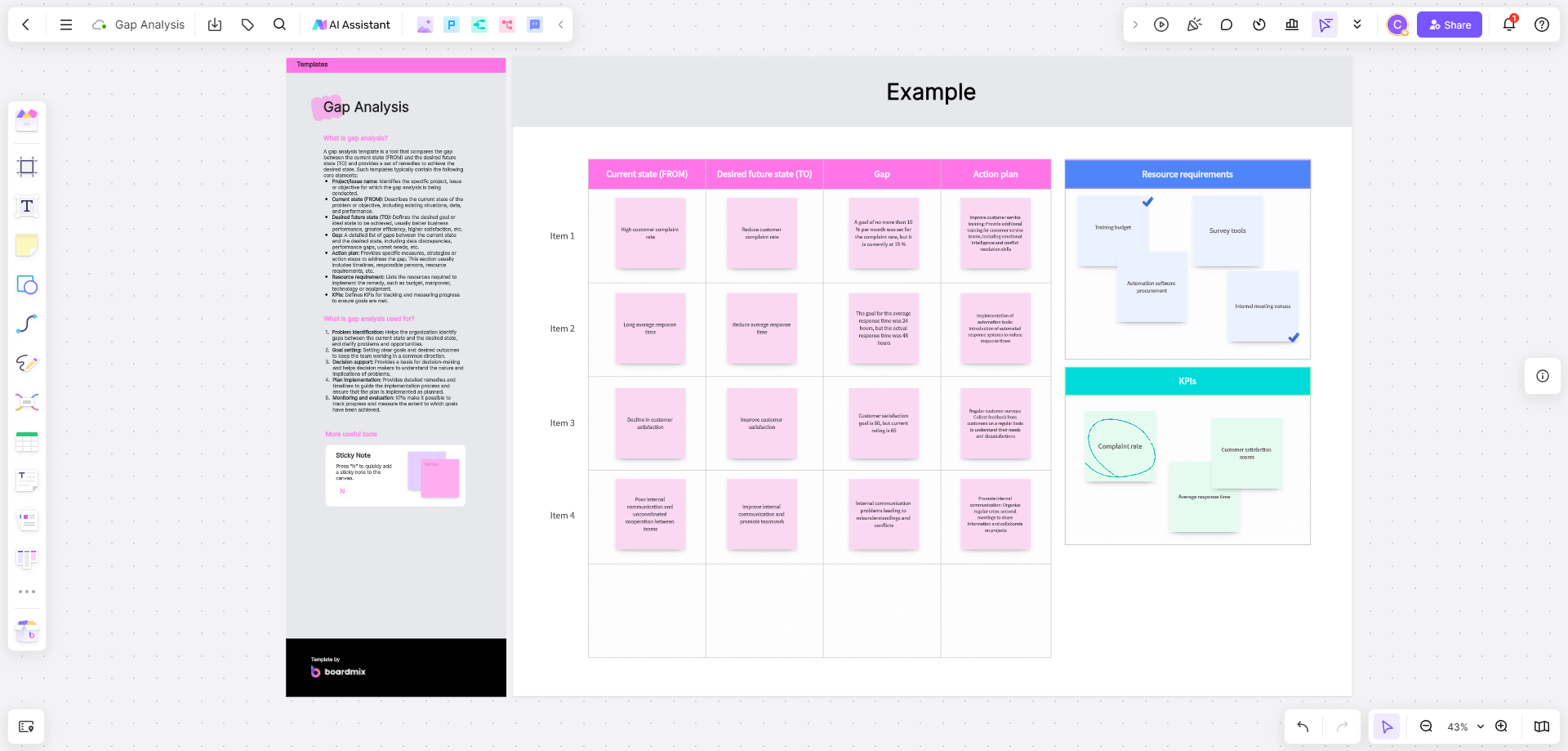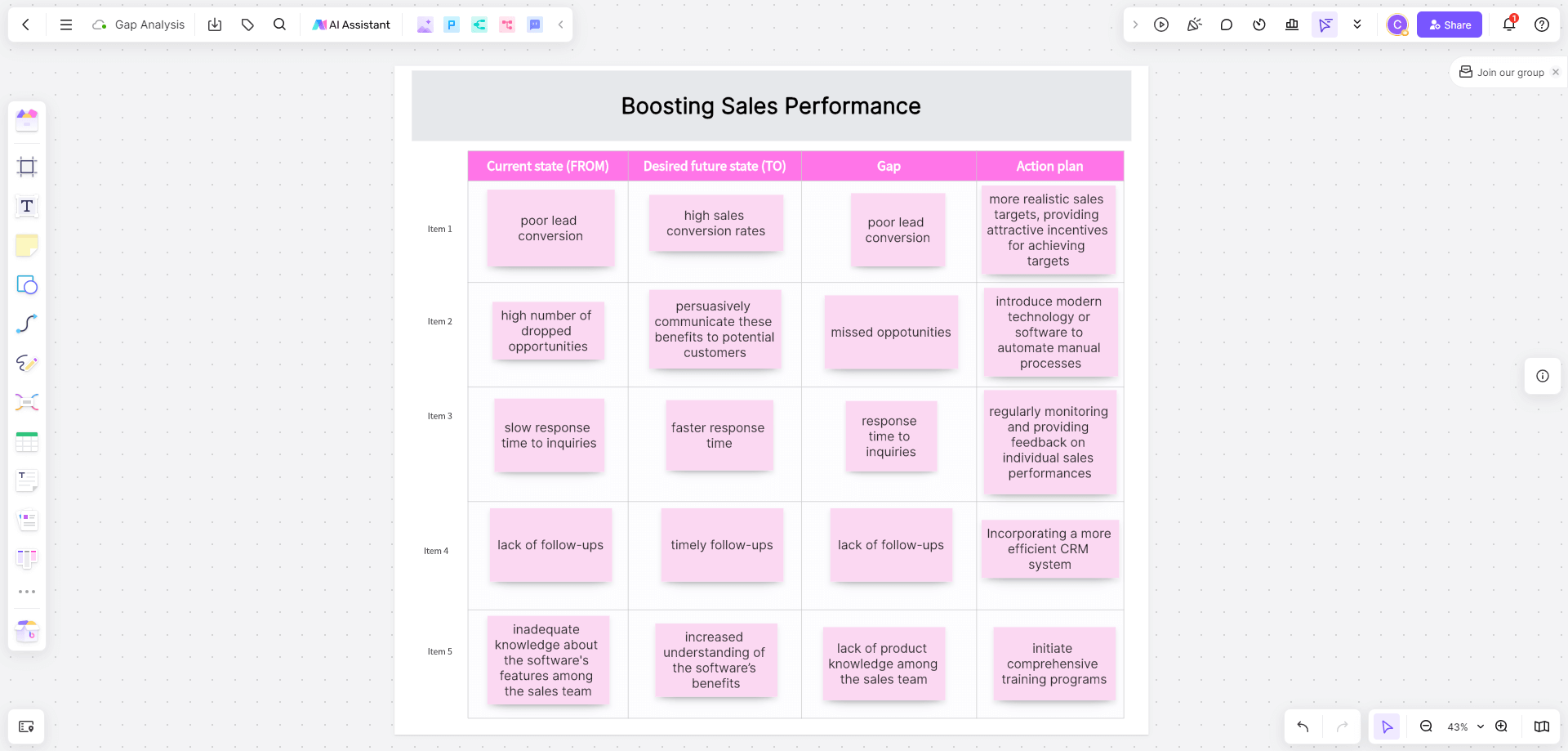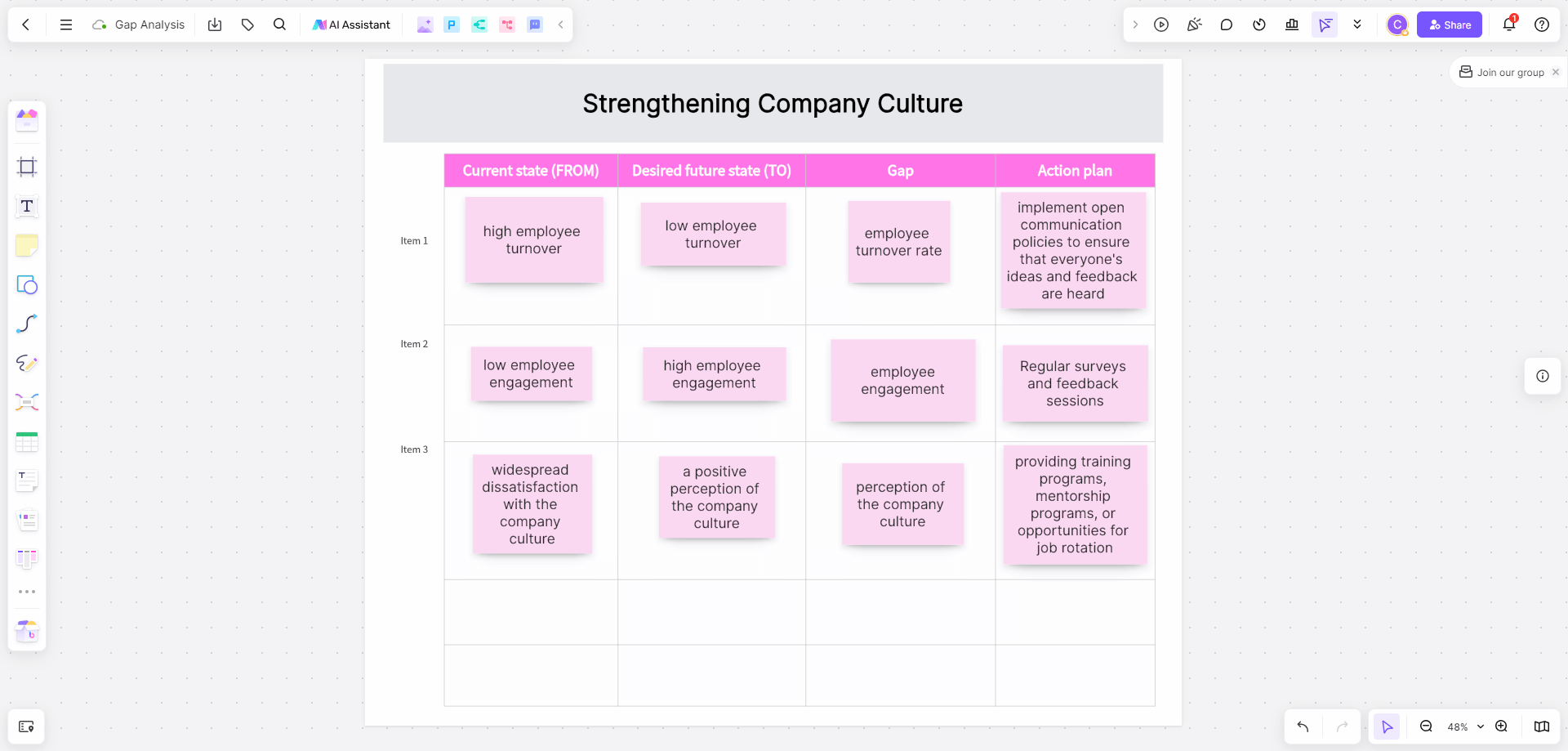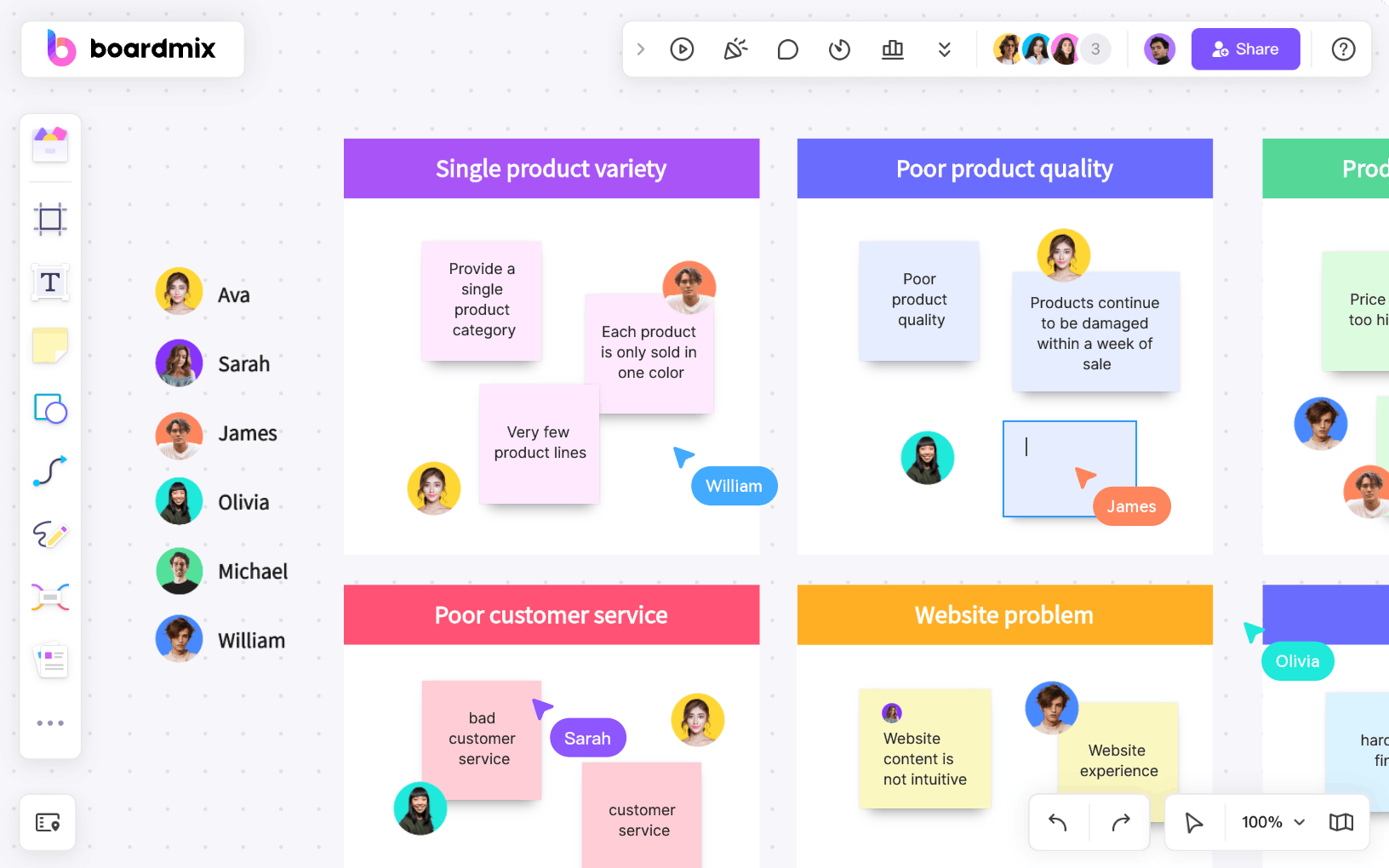Through gap analysis, an organization can illuminate its strengths and weaknesses, strategically targeting areas for improvement and efficiently channeling resources to attain its goals. For businesses yearning for growth and success, employing gap analysis model can lead them right onto the path they wish to tread.
What Is Gap Analysis?
In the simplest terms, gap analysis is a strategic planning tool used by businesses to identify the difference between their current state and their desired, or future state. This is often referred to as the 'gap'. In other words, it involves discerning where we are (present state), where we want to be (target state), and how we're going to get there (bridging the gap).
The Components of Gap Analysis
For gap analysis to function optimally and deliver beneficial results, there are several components that must be critically evaluated. The four critical components are:
Current Performance - A realistic analysis of where the business stands currently is vital in identifying gaps. This requires taking into account all internal and external factors affecting performance.
Desired Performance - This reflects the objectives or goals set by the business. It could be based on financials, market share, customer satisfaction levels etc.
The Gap - This is essentially the difference between the current performance and desired performance. This gap may exist in processes, systems or competencies within the business.
Bridging the Gap - This involves identifying ways and strategies to bridge the gap, i.e., achieving desired performance from current performance.
Why Use Gap Analysis in Bridging Performance Gaps
Setting Clear Goals: By identifying where the organization currently stands and comparing it to its desired future state, gap analysis model aids in setting clear, realistic, and actionable objectives.
Identifying Performance Gaps: A thorough gap analysis brings to light areas where a business is not meeting its potential. This could be a lack of necessary resources, outdated technology, ineffective processes, or even shortcomings in skills or competencies.
Improving Resource Allocation: By pinpointing the gaps that exist within an organization, gap analysis enables decision-makers to make informed choices about how best to allocate resources — time, money, personnel, etc. — for maximum effectiveness.
Informing Strategy Development: gap analysis model helps in strategy formulation by allowing organizations to understand their deficiencies better. It guides the strategic planning process, paving the way for effective interventions to close the performance gaps.
Five Examples of Gap Analysis
Gap Analysis Example 1: Improving Customer Service Levels
Current Performance
Assuming a business is facing a decline in its customer satisfaction ratings and need an evaluation. This evaluation can be based on customer feedback, complaints, and online reviews, and may include issues such as delayed response times, incorrect product information, untrained customer service staff, or an inefficient Customer Relationship Management (CRM) system.
Desired Performance
The desired performance would be a significant improvement in customer satisfaction ratings. The company aims for immediate response times, accurate product information, highly trained customer service staff, and an efficient CRM system. The focus is on making every customer interaction seamless, satisfying and valuable.
Gap
The gap is the difference between where the company is (current performance) and where it wants to be (desired performance). In this scenario, the gap includes all the identified deficiencies - delayed responses, incorrect information, inadequate training of staff, and an outdated CRM system.
Bridging the Gap
The last component involves developing and implementing strategies to bridge the identified gaps. The business may employ several strategies, such as providing rigorous training to their customer service staff to handle queries more effectively, updating or replacing their existing CRM system with a more advanced one for better customer management and service delivery, or employing more staff during peak hours to reduce response time.
Gap Analysis Example 2: Enhancing Product Quality
Current Performance
Suppose a manufacturing company has recently faced complaints about its product quality. Their current performance could involve issues like frequent product defects, low customer satisfaction, high product return rates, and negative online reviews. These issues might arise due to the use of substandard raw materials, outdated machinery, or inefficient production processes.
Desired Performance
The desired performance involves high-quality products that exceed customer expectations, resulting in improved customer satisfaction, reduced product returns, positive reviews, and enhanced brand reputation. This requires the use of top-grade raw materials, advanced machinery, and efficient production processes.
Gap
The gap is defined by the discrepancies between the current and desired performances. For this manufacturing company, the gaps might be the use of low-quality raw materials, outdated machinery, and ineffective production processes.
Bridging the Gap
Bridging the gap involves adopting strategies to transition from the current performance level to the desired one. To address the identified gaps, the company could start by sourcing higher-quality raw materials from reliable suppliers. This would directly enhance the quality of the final product.
In addition to upgrading their machinery and technology, this would not only improve product quality but also optimize production time and reduce costs in the long run. Efficient production processes can be ensured through regular training of staff, standardizing procedures, and implementing stringent quality control checks.
Moreover, they might consider investing in research and development (R&D) to explore new manufacturing techniques or innovative product designs that could elevate their product quality even further.

Gap Analysis Example 3: Increasing Operational Efficiency
Current Performance
Imagine a company experiences slow production rates, high operational costs, and delivery delays. The bottlenecks might be a result of manual or outdated processes, poor supply chain management, inefficient resource allocation, or inadequate communication between teams.
Desired Performance
The desired performance level would include fast production rates, reduced operational costs, timely deliveries, and a streamlined supply chain. Ideally, the company seeks an efficient and effective operation where resources are optimally utilized, and there's seamless coordination between different teams.
Gap
The gap here represents the difference between the current inefficiencies (slow production, high costs, delivery delays, poor supply chain management) and the desired operational efficiency.
Bridging the Gap
To bridge this gap, the company needs to strategize and implement measures that enhance efficiency. They could introduce modern technology or software to automate manual processes, thereby speeding up production rates and reducing costs associated with manual labor.
Implementing an effective inventory management system can help manage supply chains better. A balanced and optimized resource allocation system can ensure that all resources are used efficiently and reduce wastage.
Strengthening inter-departmental communication through regular meetings or an efficient communication platform can keep all teams aligned with the company's goals and priorities, leading to a more coordinated effort.
Gap Analysis Example 4: Boosting Sales Performance
Current Performance
Consider a software company currently struggling with low sales conversion rates. Issues may include poor lead conversion, a high number of dropped opportunities, slow response time to inquiries, lack of follow-ups, or inadequate knowledge about the software's features among the sales team.
Desired Performance
The desired performance level involves significantly improved sales conversion rates. The goals would be faster response times, timely follow-ups, increased understanding of the software’s benefits among the sales team, and an ability to persuasively communicate these benefits to potential customers.
Gap
The gap represents the discrepancies between the current and desired performances. In this case, the gap comprises poor lead conversion, lack of follow-ups, slow response time to inquiries, and a lack of product knowledge among the sales team.
Bridging the Gap
To bridge this gap, the company could initiate comprehensive training programs for the sales team to improve their product knowledge and sales techniques. This will allow them to better present the software's features and benefits, leading to improved conversion rates.
Incorporating a more efficient Customer Relationship Management (CRM) system can facilitate timely follow-ups and quicker response times to inquiries.
They might also consider setting more realistic sales targets, providing attractive incentives for achieving targets, and regularly monitoring and providing feedback on individual sales performances.
Gap Analysis Example 5: Strengthening Company Culture
Current Performance
Suppose a company experiences high employee turnover, low employee engagement, and widespread dissatisfaction with the company culture. These could be due to poor communication, lack of team collaboration, insufficient recognition of employees' efforts, or a work environment that doesn't encourage innovation or growth.
Desired Performance
In an ideal scenario, the company aims for low employee turnover, high employee engagement, and a positive perception of the company culture. They envision a culture that promotes open communication, encourages teamwork, recognizes employees' contributions, and fosters innovation and personal growth.
Gap
The gap, in this case, would be the difference between the current state (high turnover, low engagement, negative perception) and the desired state (low turnover, high engagement, positive perception).
Bridging the Gap
To bridge this gap, several strategies can be put in place. For starters, the company can implement open communication policies to ensure that everyone's ideas and feedback are heard. This can encourage collaboration and build stronger relationships among team members.
In terms of recognition, they could establish a system to regularly acknowledge and reward employees for their contributions. This could take the form of employee-of-the-month awards, performance-based bonuses, or even simple public recognition.
The organization can also create opportunities for employees to grow and learn by providing training programs, mentorship programs, or opportunities for job rotation.
Regular surveys and feedback sessions could be utilized to understand employees' concerns and suggestions regarding the existing culture.
How to Implement Gap Analysis in Boardmix
Boardmix as an online collaboration whiteboard enables teams to collaborate, brainstorm, and visualize ideas efficiently. Boardmix offers free a gap analysis tamplate which can help save your time and energy to structure your framework. Here's a step-by-step guide to implementing gap analysis model in Boardmix.
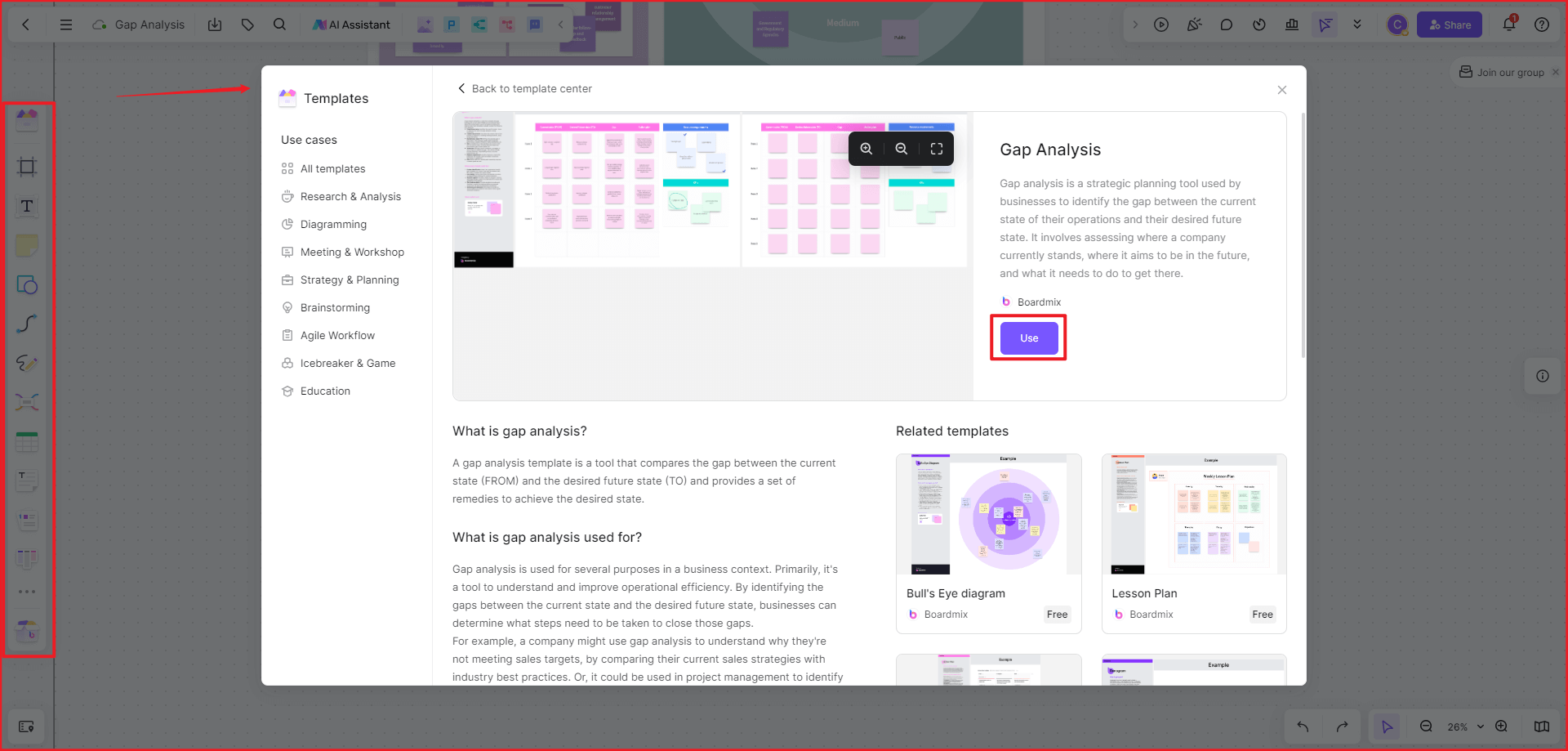
1. Sign in and Choose the Gap Analysis Template: Open the website and sign in, you can start a new board and choose the gap analysis template.
2. Identify the Current Performance: This step involves evaluating the current state of affairs in your organization, be it in terms of sales performance, operational efficiency, product quality, or company culture.
3. Establish the Desired Performance: Define what your desired outcome or target state looks like. This could be setting specific sales targets, enhancing operational efficiency, achieving a certain level of product quality, or fostering a particular company culture.
4. Identify the Gap: The gap is the difference between the current performance and the desired performance. Analyze this gap in depth - determine its causes and effects on your business.
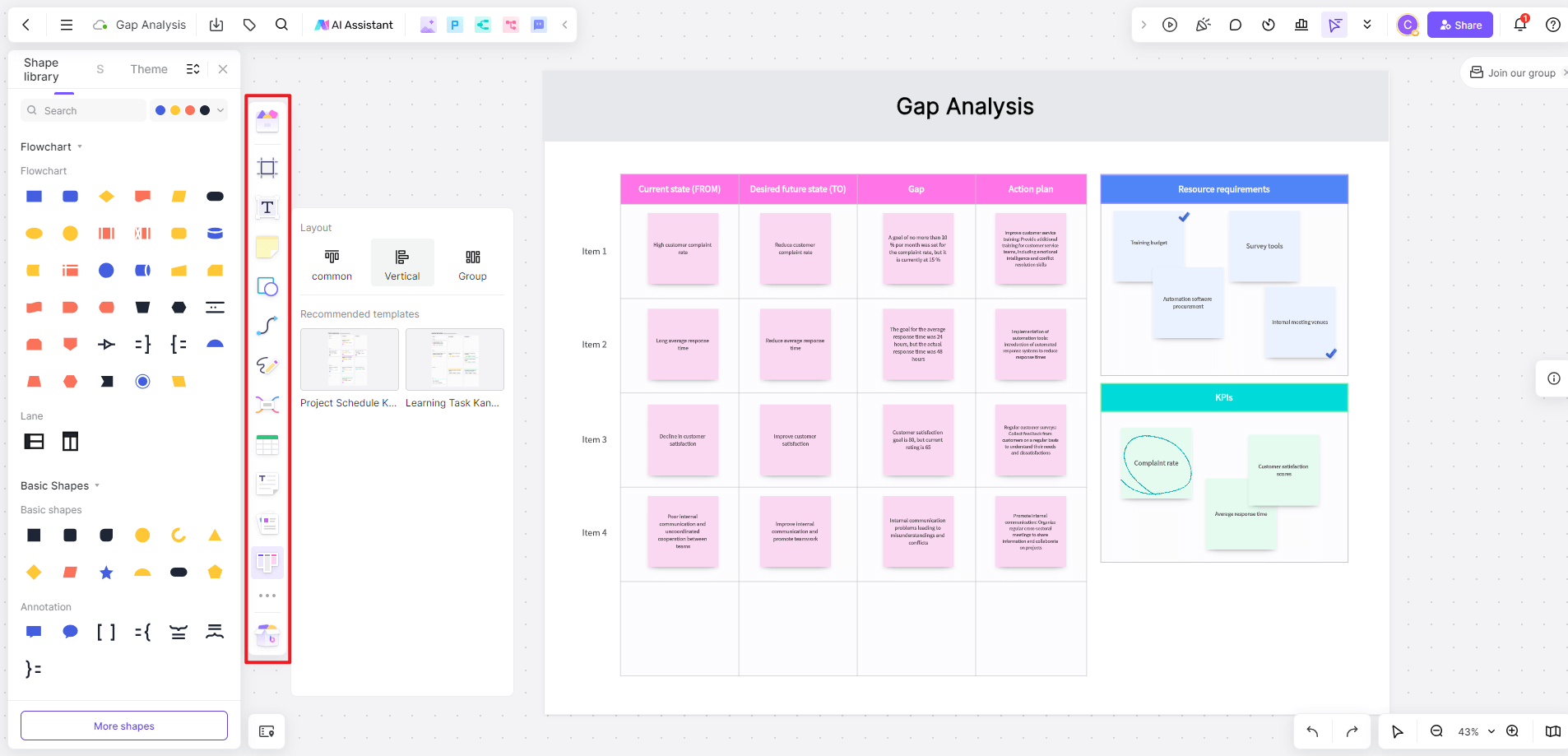
5. Devise Strategies to Bridge the Gap: You can utilize the tool bar on the left hand to create a detailed plan that outlines the actions necessary to bridge the identified gaps. This could involve changes in processes, implementation of new technologies, employee training programs, modifications in management style, etc.
6. Implement the Strategies: After devising the plan, put it into action. This may require resources such as funding, time, and labor. Keep communication open throughout this process so everyone involved understands their roles and responsibilities.
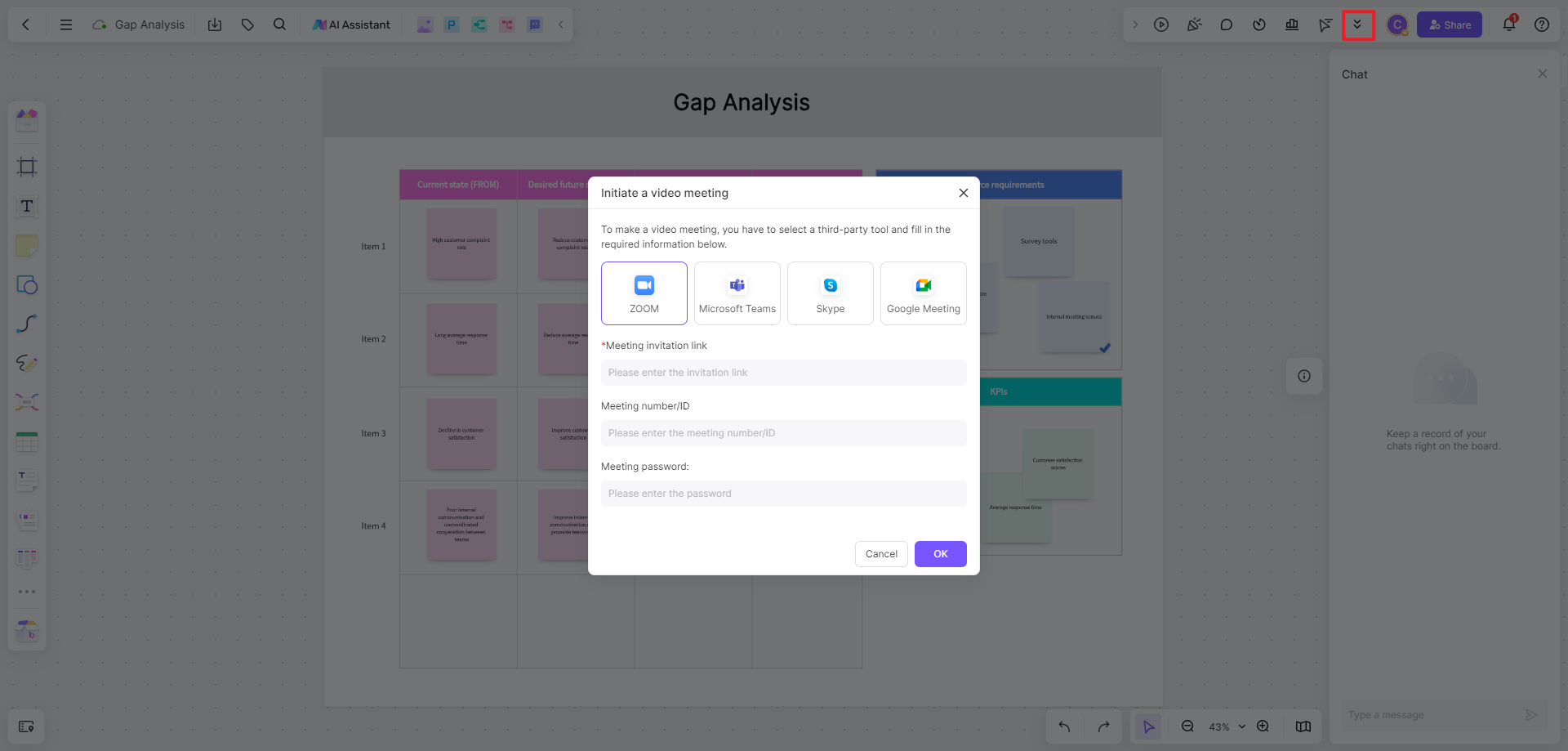
7. Review and Refine: You can share your analysis with your team in meetings which is integrated in Boardmix for further discussion of the effectiveness of your strategies regularly. Use key performance indicators (KPIs) to measure progress. If some strategies aren't working as expected, refine them until you achieve your desired state.
Conclusion: Maximizing Potential with Effective Gap Analysis
With Boardmix, not only can you visualize your progress, but also track changes, share insights, and make real-time updates, fostering seamless collaboration within your team. Embrace the power of visualization in strategic planning and problem-solving with Boardmix's gap analysis template now!











